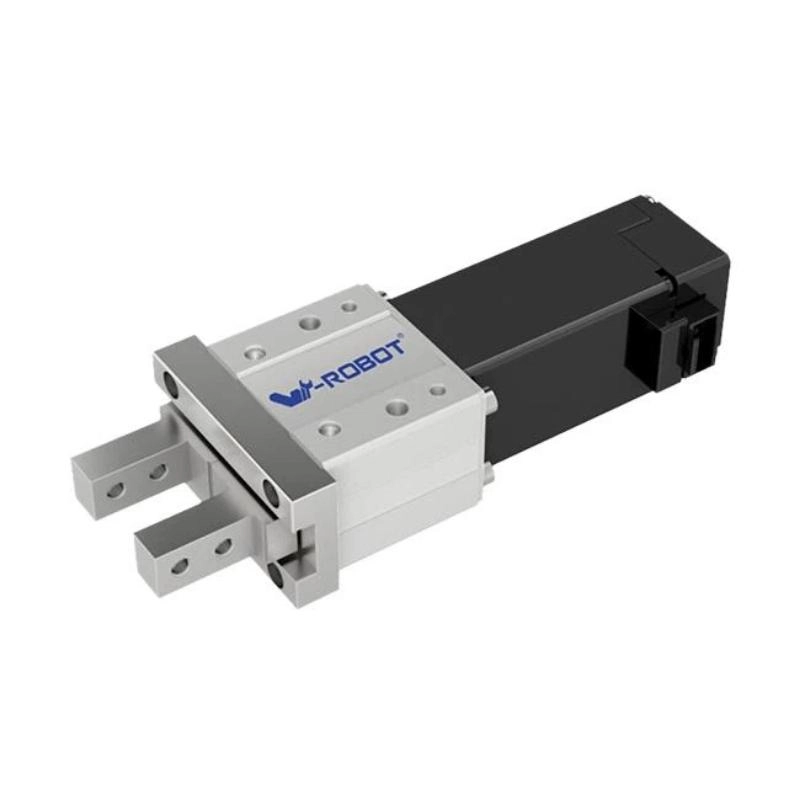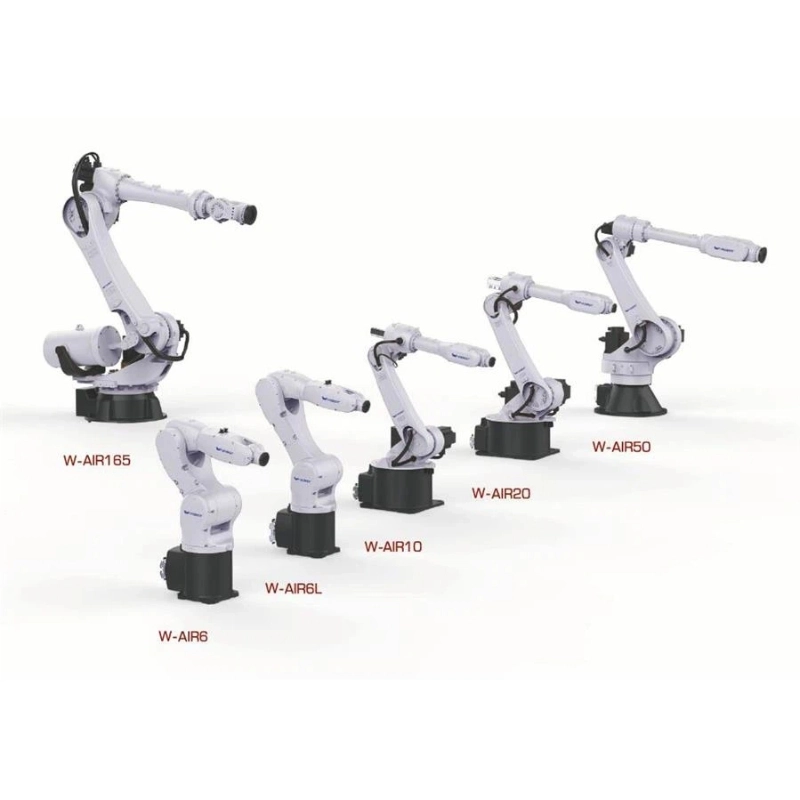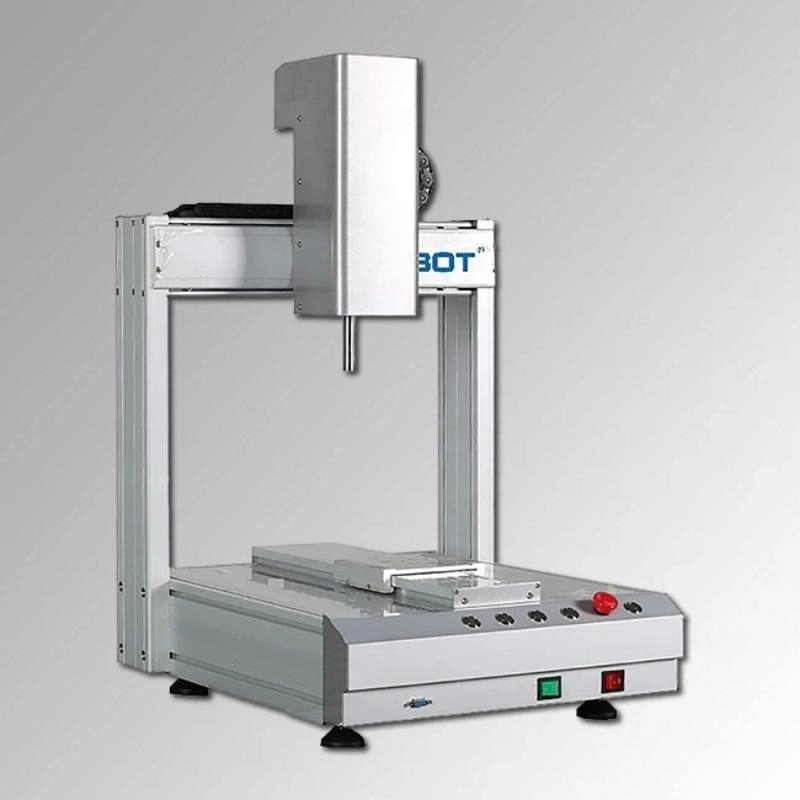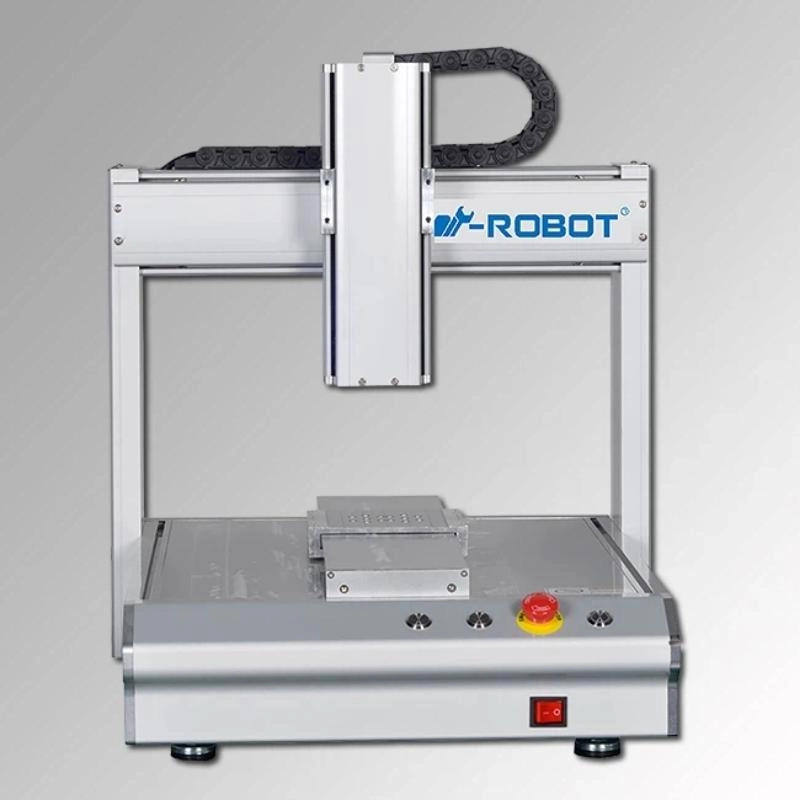Danh mục nội dung: Chuyên mục chính/4. Công cụ và thiết bị điện tử chuyên dùng khác/4.2. Thiết bị đo kiểm Viễn thông, truyền hình
| | | | | ◊ Đặc điểm chính: | | The six-joint industrial robot has a high degree of freedom, six joints, and a long travel, which is suitable for almost any trajectory or angle of work.
|
|
|
1. Product Introduction
The SCARA acronym stands for Selective Compliance Assembly Robot Arm or Selective Compliance Articulated Robot Arm.
SCARA Robots are a popular option for small robotic assembly applications.
SCARA is an acronym for Selective Compliance Articulated Robot Arm, meaning it is compliant in the X-Y axis, and rigid in the Z-axis.
SCARA configuration is unique and designed to handle a variety of material handling operations.
By virtue of the SCARA’s parallel-axis joint layout, the arm is slightly compliant in the X-Y direction but rigid in the ‘Z’ direction, hence the term: Selective Compliant. This is advantageous for many types of assembly operations, i.e., inserting a round pin in a round hole without binding.
The second attribute of the SCARA is the jointed two-link arm layout similar to our human arms, hence the often-used term, Articulated. This feature allows the arm to extend into confined areas and then retract or “fold up” out of the way. This is advantageous for transferring parts from one cell to another or for loading/ unloading process stations that are enclosed.
SCARAs are generally faster than comparable Cartesian robot systems. Their single pedestal mount requires a small footprint and provides an easy, unhindered form of mounting. On the other hand, SCARAs can be more expensive than comparable Cartesian systems and the controlling software requires inverse kinematics for linear interpolated moves. This software typically comes with the SCARA though and is usually transparent to the end-user.
Most SCARA robots are based on serial architectures, which means that the first motor should carry all other motors. There also exists a so-called double-arm SCARA robot architecture, in which two of the motors are fixed at the base.
2. Product Parameter (specification)
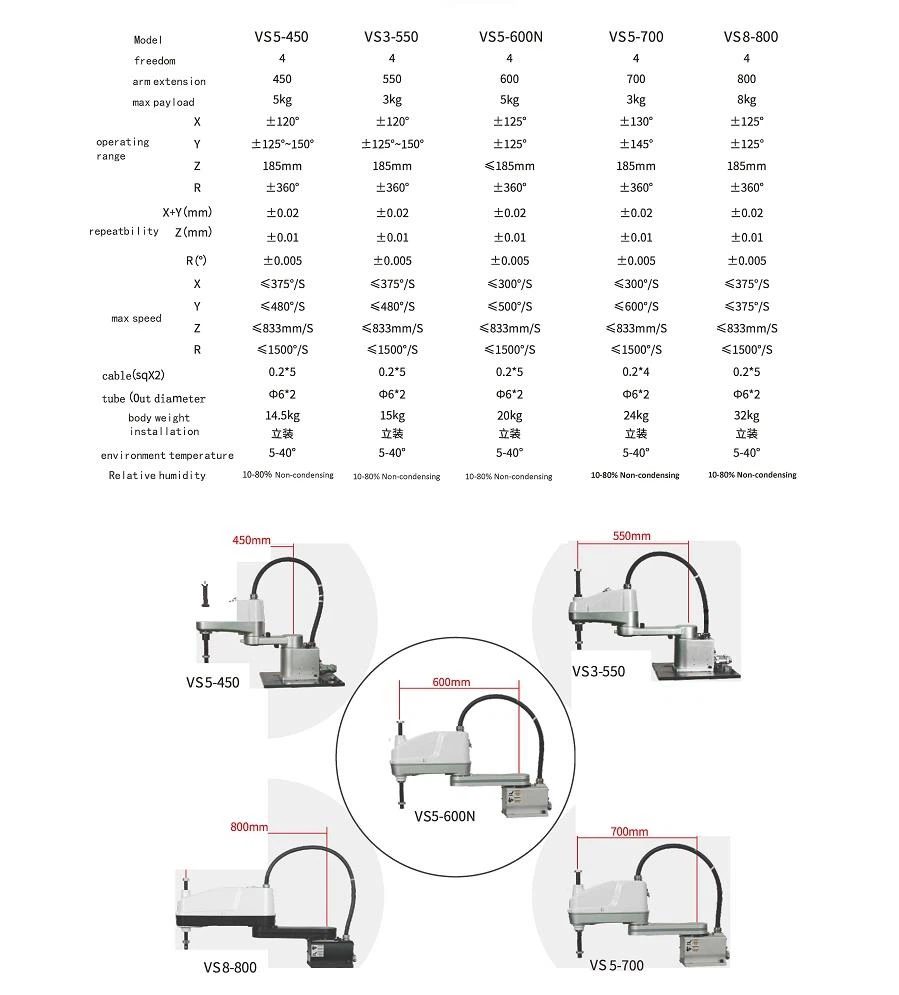
3. Product feature and application:
What Can You Do With a SCARA Robot?
Do you need a SCARA or another type of robot? With a new SCARA added to our Robot Library, here are the benefits of this classic robot.
What are the benefits of them over the more common 6-axis robots?
As the performance of 6-axis robots continues to improve year after year, you might be wondering: Do I need a SCARA?
Let’s take a look at this classic robot and find out what you can do with it.
SCARA is an acronym, but the meaning of the first letter A has changed slightly over the years.
The two definitions are:
Selective Compliance Assembly Robot Arm — This was the original definition and is still probably the most common.
Selective Compliance Articulated Robot Arm — This definition came into use later as SCARAs have been applied to other tasks which do not involve assembly.
These days, SCARAs are used for a whole host of different industrial tasks in a wide range of industries.
What do those other terms mean?
The final two letters (RA for “Robot Arm”) are self-explanatory, but what about Selective Compliance?
Selective Compliance
In robotics, compliance means that a robot has flexibility in one or more of its joints (or sometimes in its mechanical structure). If you push a compliant robot, it will give way under your touch. It won’t push back or hold steady.
SCARAs are compliant in the X-Y axis but rigid in the Z-axis. This gives them some flexibility which is particularly useful for assembly applications which require compliance— e.g. inserting a peg in a hole.
How a SCARA Compares to Other Robots
These days, there are so many different robots with different levels of performance. It is difficult to say that SCARAs are “better” than other types in any particular aspect. There is often more variability between individual robot models than between robot types.
Even so, here are six categories where SCARAs tend to be different from other robot types.
Rigidity
Due to their selective compliance, SCARAs are less rigid than Cartesian or gantry robots. However, they are more rigid than both 6-axis robots and Delta robots due to their rigid Z-axis.
This makes SCARAs a kind of “halfway house” between Cartesian and 6-axis robots.
Speed
SCARAs are very well suited to high-speed assembly applications. They are generally faster than 6-axis robots. As a result, it is much more likely to see them being used for pick-and-place. However, they are not as fast as Delta robots which are the top choice for high-speed pick-and-place.
Axes
One of the clearest distinctions between SCARAs and 6-axis robots is that they have fewer Degrees-of-Freedom. Like most Delta robots, they have only 4 axes.
Payload
The payload of SCARAs is generally quite low. The models in our Robot Library can lift between 0.5-20 kg. This is much less than 6-axis robots which can lift between 1-1700 kg, but it is more than Delta robots which can lift between 0.3-8 kg.
Repeatability
Assembly tasks require quite a high degree of precision, which means that SCARAs generally have better repeatability than other types of robot. The robots with the best repeatability in our Robot Library are all SCARAs and it’s not uncommon to see them with a repeatability of just 0.01 mm.
Cost
When SCARAs were first introduced in the 1980s, they represented the best price to performance ratio for high-speed tasks. This is still true today as they tend to be cheaper than the faster Delta robots.
Tasks That SCARA Robots Excels At
Robots are very adaptable and almost every type of robot can be used for a variety of tasks. SCARAs are no different but there are some tasks that they really excel at. Here are five of them:
A. Small Assembly
The task that the SCARA was designed to do. High-speed assembly tasks, such as those in the electronics industry, are very common for SCARA robots. Their selective compliance means that they can perform insertions more easily than other types of robot, without having to use complex programming.
B. Pick and Place
SCARAs are often the quickest, cheapest robot for high-speed pick and place. Their speed is only beaten by Delta robots, but they are usually easier to install because they do not require the robot to be mounted above the workspace.
C. Laser Engraving
SCARA robot drawing application
The high precision of SCARAs means that they are also very well suited to laser engraving and drawing tasks. Over the last few years, several end effectors have come onto the market which allow you to add laser engraving capabilities to any small robot.
D. 3D Printing
Another task which is becoming a rising star in the world of robotics is 3D printing. We’ve already seen a lot of applications where 6-axis robots are making it possible to print much bigger objects with 3D printing technology. SCARAs are well suited to this new application on the smaller end of the scale.
E. Soldering
SCARAs are very popular in the electronics industry because they can be used for many of the core manufacturing tasks. One such task is soldering. With a suitable end effector, they can provide very consistent quality of solder and improve efficiency when compared to soldering by hand.
4. Production detail:
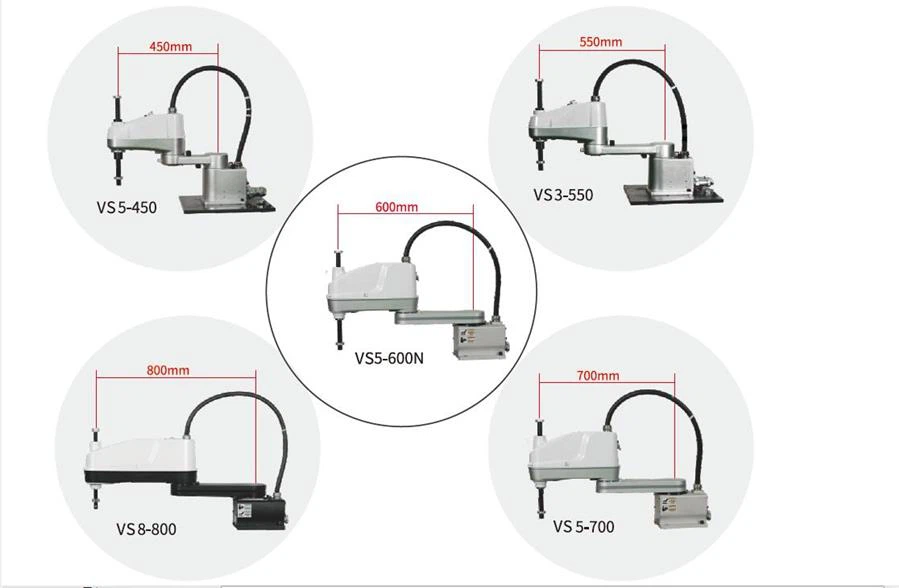
CÁC SẢN PHẨM KHÁC CÙNG NHÀ SẢN XUẤT / OTHER PRODUCTS FROM W-robot |
| 
 ENGLISH
ENGLISH Trang chủ
Trang chủ 





























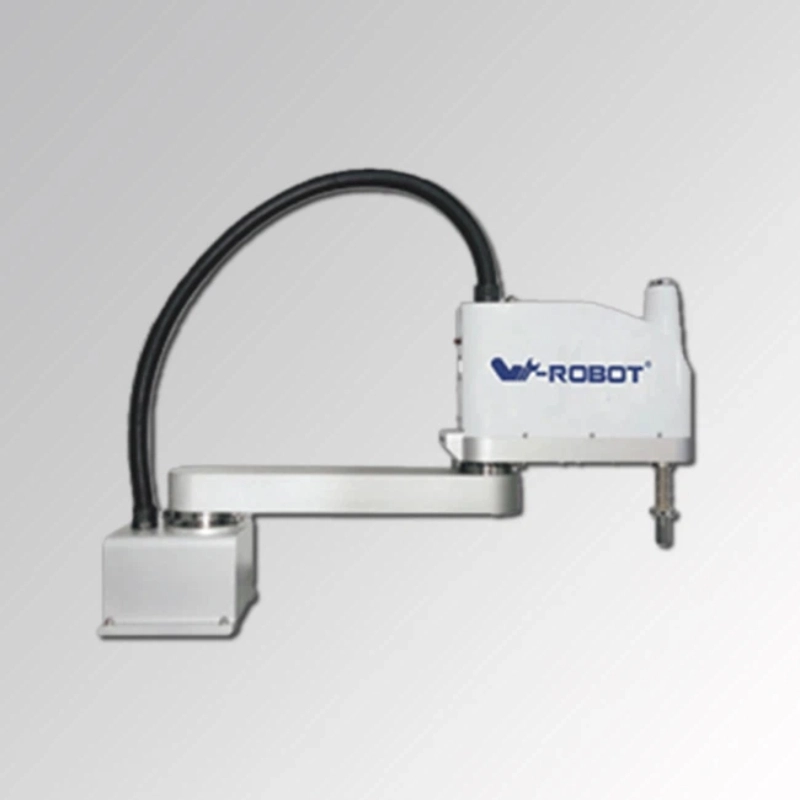
 Scara Electric Robot of W-robot
Scara Electric Robot of W-robot

